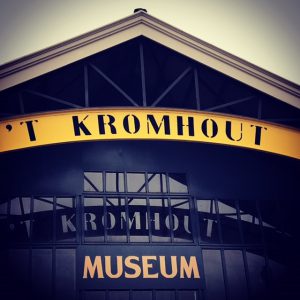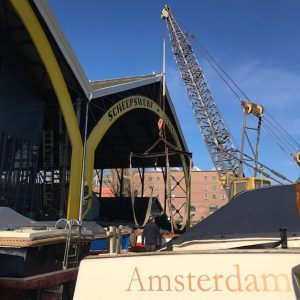Historic area
From the beginning of the Golden Age, this was the part of Amsterdam where ships were built. The big shipyards of the Admiralty and the VOC (Dutch East India Trading Company) were established on the Eastern Islands of Kattenburg and Oostenburg.
The unloading quays were on the island of Wittenburg and the smaller shipyards started at the edge of the old city, along Rapenburg and the Nieuwe Vaart. Business was booming and the city was expanding rapidly due to immigration. Already in 1663, during the fourth expansion of Amsterdam, the defences had been constructed beyond the shipyards. A couple of hundred metres further on, you can see a relic of the time: the Muiderpoort city gate.
Fifty years ago, just three shipyards remained, and now “Werf 't-Kromhout” is the only shipyard left in this part of the city.

The shipyard
The Goedkoop family, for the maintenance of their steam tugs, bought the shipyard in 1870.
Around 1900, an engine factory was set up in the newly built second covered workshop, where the first Kromhout engines were developed. When the company moved to North Amsterdam, the new owners continued to repair and tar ships until 1970.
In 1973, the premises were taken over by the foundation “Stichting Werf 't-Kromhout”. The Friends’ Association “Vereniging Vrienden van de Werf 't-Kromhout” was founded a year later and became the custodian and owner of the collection and the stock. The premises were taken over by the Amsterdams Monumenten Fonds.
Three years later, this foundation merged with the Amsterdamse Maatschappij tot Stadsherstel and was renamed Stadsherstel Amsterdam NV.
The foundation holds the shipyard and buildings on long lease.
Stadsherstel transferred the management of the museum to the association, which changed its name in 2012 to “Vereniging Museum 't-Kromhout.
The operation of the shipyard in the west hall is legally separated from the engine hall that houses Museum 't-Kromhout.

